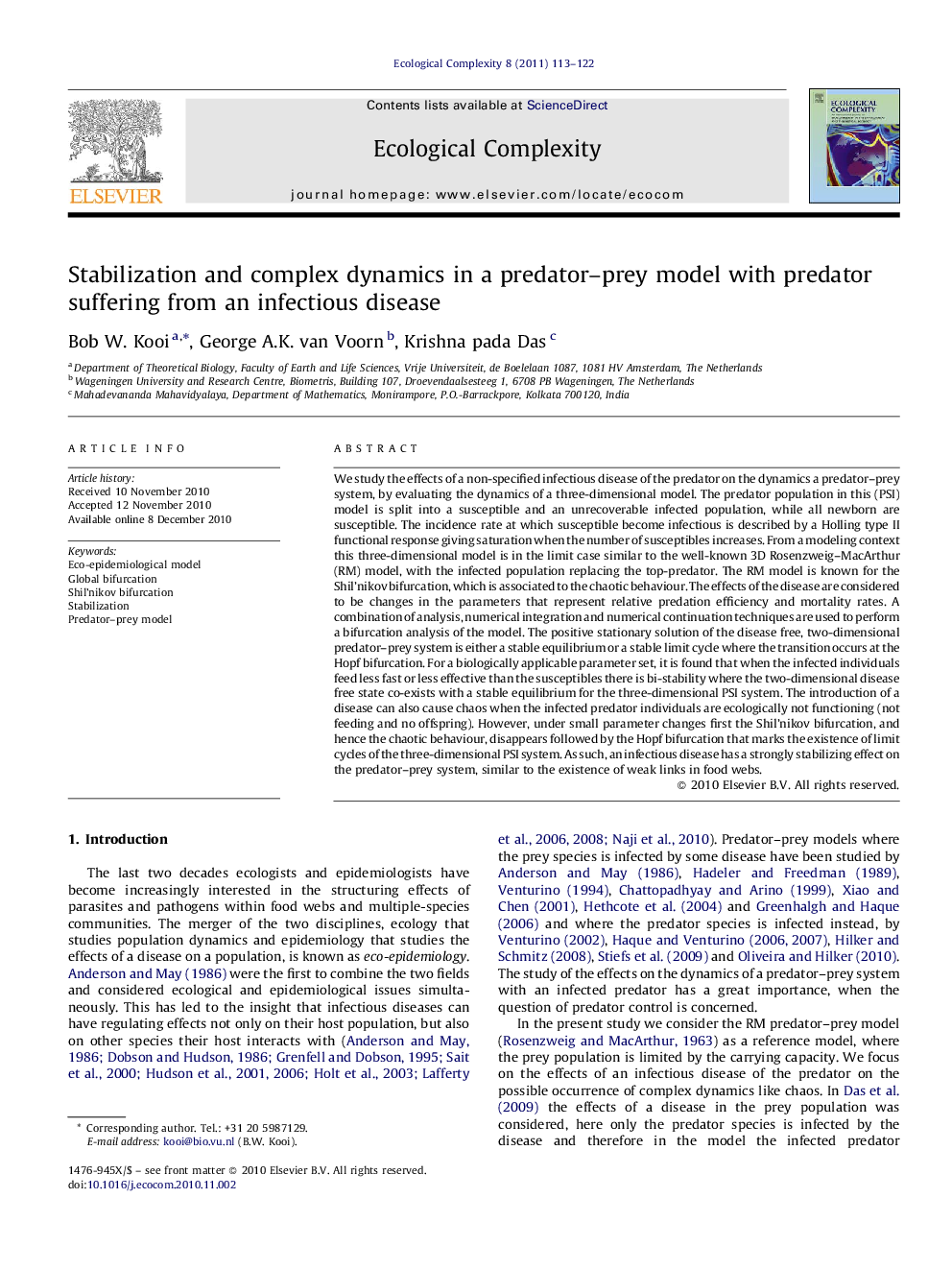| Article ID | Journal | Published Year | Pages | File Type |
|---|---|---|---|---|
| 4372637 | Ecological Complexity | 2011 | 10 Pages |
We study the effects of a non-specified infectious disease of the predator on the dynamics a predator–prey system, by evaluating the dynamics of a three-dimensional model. The predator population in this (PSI) model is split into a susceptible and an unrecoverable infected population, while all newborn are susceptible. The incidence rate at which susceptible become infectious is described by a Holling type II functional response giving saturation when the number of susceptibles increases. From a modeling context this three-dimensional model is in the limit case similar to the well-known 3D Rosenzweig–MacArthur (RM) model, with the infected population replacing the top-predator. The RM model is known for the Shil’nikov bifurcation, which is associated to the chaotic behaviour. The effects of the disease are considered to be changes in the parameters that represent relative predation efficiency and mortality rates. A combination of analysis, numerical integration and numerical continuation techniques are used to perform a bifurcation analysis of the model. The positive stationary solution of the disease free, two-dimensional predator–prey system is either a stable equilibrium or a stable limit cycle where the transition occurs at the Hopf bifurcation. For a biologically applicable parameter set, it is found that when the infected individuals feed less fast or less effective than the susceptibles there is bi-stability where the two-dimensional disease free state co-exists with a stable equilibrium for the three-dimensional PSI system. The introduction of a disease can also cause chaos when the infected predator individuals are ecologically not functioning (not feeding and no offspring). However, under small parameter changes first the Shil’nikov bifurcation, and hence the chaotic behaviour, disappears followed by the Hopf bifurcation that marks the existence of limit cycles of the three-dimensional PSI system. As such, an infectious disease has a strongly stabilizing effect on the predator–prey system, similar to the existence of weak links in food webs.
